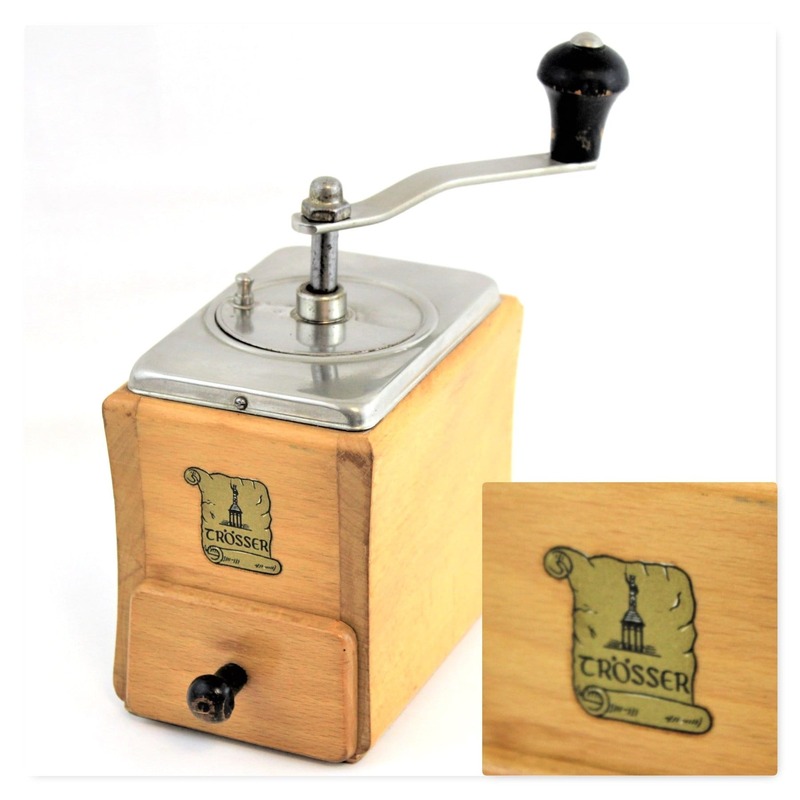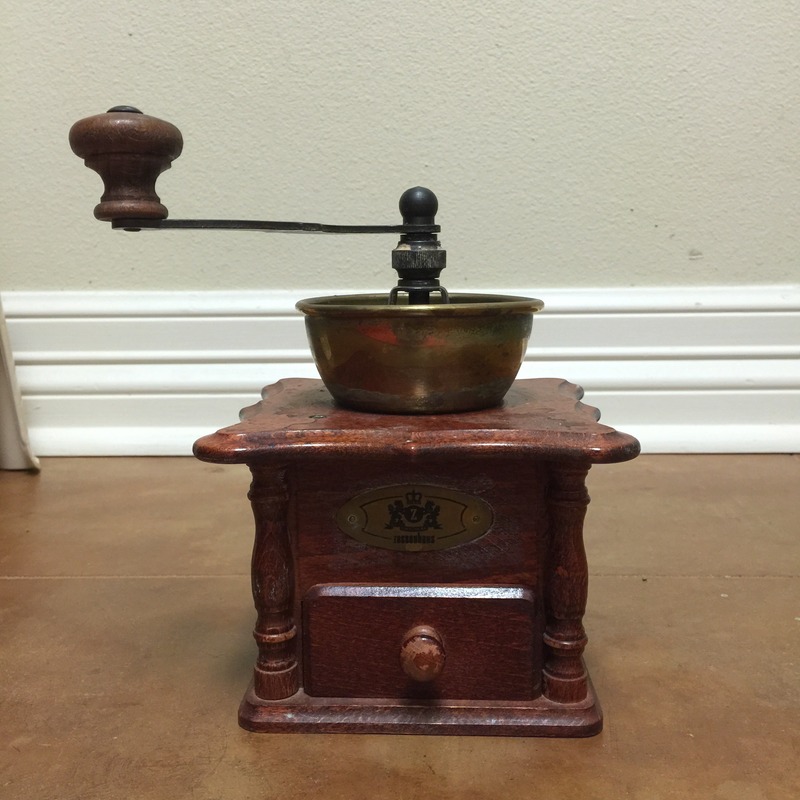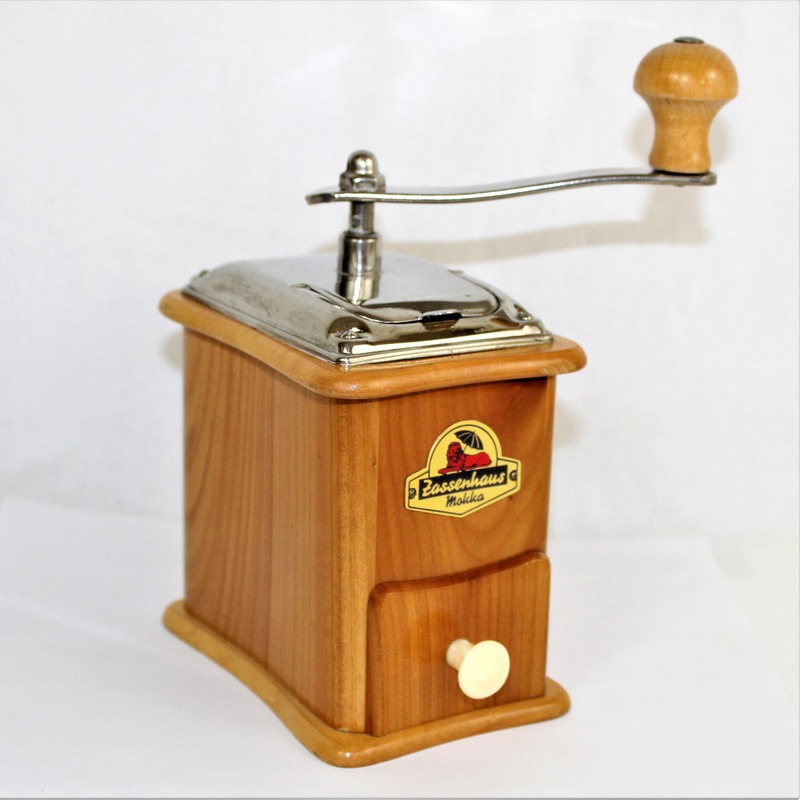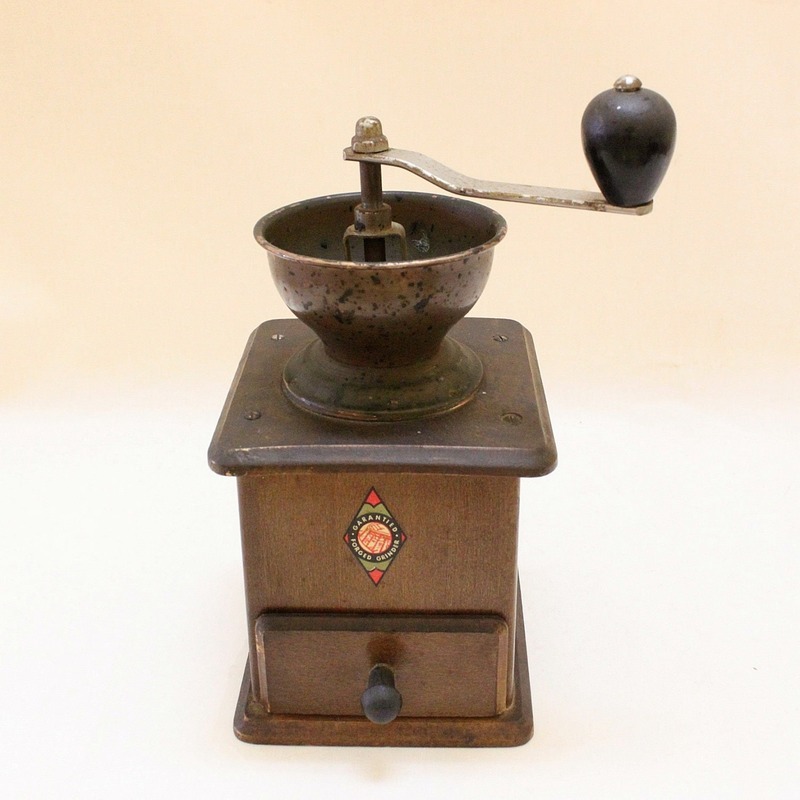Introduction: The Allure of Vintage German Coffee Grinders
There’s something exceptionally charming about a vintage German coffee grinder. These machines not only serve a functional purpose but also represent a piece of history. As coffee enthusiasts worldwide rediscover the joys of brewing coffee the traditional way, vintage grinders stand as symbols of craftsmanship and style. While many modern gadgets promise convenience, they often lack the character and charm found in their vintage counterparts.
Owning a vintage German coffee grinder is about more than just brewing coffee; it’s about experiencing tradition. The tactile process of grinding beans with a manual grinder enhances your connection to the beverage. The rich aroma of freshly ground coffee fills the air, creating memories that cannot be replicated. This article examines everything you need to know about vintage German coffee grinders, exploring their history, benefits, types, usage tips, restoration methods, and where to find them.

The History of German Coffee Grinders
The story of German coffee grinders dates back centuries. The country has long been known for its exceptional craftsmanship and engineering skills, particularly in the production of quality kitchen tools. As coffee became increasingly popular across Europe in the 18th and 19th centuries, the demand for reliable coffee grinders rose sharply. German artisans responded by creating some of the world’s finest manual grinders.
German coffee grinders often blended functionality with aesthetic appeal. Manufacturers like Zassenhaus, one of the most renowned brands, began producing high-quality grinders. The designs often featured intricate engravings and robust materials, making them durable and visually stunning. Moreover, the meticulous attention to detail ensured that these grinders produced consistently high-quality grinds, essential for brewing excellent coffee. Today, vintage German coffee grinders are not just functional kitchen tools; they are collectible items cherished by enthusiasts and collectors alike.
Benefits of Using a Vintage German Coffee Grinder
Using a vintage German coffee grinder brings multiple benefits that modern electric grinders cannot replicate. First, manual coffee grinders offer complete control over the grind size. Coffee aficionados know that the grind size significantly influences the flavor extracted from the beans. With a manual grinder, you can customize the grind consistently, ensuring you achieve the perfect brew every time.
Another significant advantage is the flavor preservation. Vintage grinders provide a gentler grinding process that reduces heat generation. Excessive heat can negatively affect the coffee’s essential oils, leading to flavor loss. Therefore, using a vintage grinder ensures you enjoy the full spectrum of flavors in your coffee. Furthermore, the nostalgia associated with using a vintage grinder adds character to your brewing routine, making the entire experience more enjoyable.
The aesthetics of vintage German coffee grinders also cannot be overlooked. Their timeless designs can be wonderful decorative pieces in your kitchen. The blend of rustic wood and metal accents complements various interiors, allowing the grinder to take center stage as a conversation starter.

Types of Vintage German Coffee Grinders
1. Hand-Crank Coffee Grinders
Hand-crank coffee grinders are perhaps the most iconic type of vintage German coffee grinder. These models feature a simple but effective design that allows users to manually grind coffee by turning a crank handle. The grinding mechanism, typically made of high-quality steel or ceramic, produces a coarse or fine grind based on your needs.
2. Wall-Mounted Coffee Mills
Wall-mounted coffee mills hold a nostalgic place in many homes. These grinders, attached to the wall, allow for easy access and a unique aesthetic. The vintage appeal comes from their design, which often includes decorative flourishes that enhance their visual charm. They are perfect for space-saving in small kitchens while still serving as a stunning decorative piece.
3. Tabletop Models
Tabletop vintage German coffee grinders are versatile and provide substantial grinding power. These models can vary greatly in size, often featuring beautiful wood finishes and intricate designs. They typically offer adjustable grind settings, allowing users to switch between coarse, medium, and fine grinds with ease. Tabletop models serve both functional and aesthetic purposes, making them a fantastic addition to any coffee lover’s collection.
Using and Maintaining a Vintage Coffee Grinder
When using a vintage German coffee grinder, it’s essential to follow some best practices to ensure optimal performance and longevity. First, ensure that the grinder is clean and free from old coffee grounds. This will help maintain the freshness of your brew. Turn the crank handle slowly, allowing the grinder to do its job effectively. Avoid forcing the crank, which can damage the internal mechanisms.
Maintenance is crucial for any vintage coffee grinder. Regularly clean the grinder to avoid oil build-up and preserve its functionality. Use a brush to clean out any residual coffee grounds. For wooden grinders, a light application of food-safe mineral oil can help protect the wood from drying out or cracking. Always check for loose screws or components, tightening them when necessary to maintain consistent performance.
Proper storage also plays a vital role in maintaining your grinder. Store it in a dry place, away from humidity, which can damage both wood and metal parts. If the grinder has any removable components, such as a drawer for ground coffee, ensure they are emptied frequently to prevent clogs or build-up.
Restoration Tips for Vintage Coffee Grinders
Restoring a vintage German coffee grinder can be a rewarding process. Many collectors and enthusiasts find joy in bringing an antique back to its former glory. Start by carefully disassembling the grinder to access its inner components. Take pictures during disassembly to ensure a smooth reassembly process.
When cleaning, use a soft cloth to wipe down the metal parts and a gentle cleaner suitable for wood on wooden components. Avoid using harsh chemicals, as they can damage the finish. If the grinder has any rust, carefully remove it using fine steel wool or sandpaper, followed by repainting or re-oiling as necessary.
For wooden parts, you might consider sanding the surface lightly to remove scratches or blemishes. After sanding, apply a food-safe finish to moisturize and protect the wood. Pay special attention to the grinding mechanism. If you notice any cracks or wear in the steel or ceramic burrs, consider replacing those components for the best performance.
Where to Buy Vintage German Coffee Grinders
Buying a vintage German coffee grinder can be an exciting endeavor. Numerous places offer a wide variety of options. Antique shops and flea markets often have hidden gems waiting for discovery. Visiting local shops allows you to inspect the grinder’s quality in person, ensuring you make a wise investment.
Online platforms like eBay, Etsy, and specialized coffee equipment sites provide access to a vast array of vintage grinders from various sellers. When browsing online, pay close attention to descriptions, photographs, and seller ratings. Look for sellers who provide detailed information about the condition and functionality of the grinder. Also, beware of reproductions that mimic vintage styles but fail to offer the same quality.
Consider joining coffee enthusiast forums or groups on social media, where members often share tips, recommendations, and even listings for sellers. Engaging with a community of like-minded individuals can enhance your knowledge and increase your chances of finding that perfect vintage German coffee grinder.

Conclusion: Embrace Tradition with a Vintage German Coffee Grinder
In conclusion, investing in a vintage German coffee grinder is more than just acquiring a kitchen tool; it’s about embracing a rich tradition that enhances your coffee experience. The craftsmanship, history, and aesthetic appeal of these grinders make them valuable collectibles. They offer numerous benefits over modern electric models, providing you with control over the grind size and flavor preservation.
Regardless of whether you are a coffee aficionado, antique collector, or someone seeking a unique gift, a vintage coffee grinder deserves your attention. Ensure you explore the various types available, maintain your grinder properly, and, if needed, restore it to its former glory. With a bit of care and attention, your vintage German coffee grinder will not only brew the perfect cup of coffee but also stand as a testament to a cherished tradition in your home.
